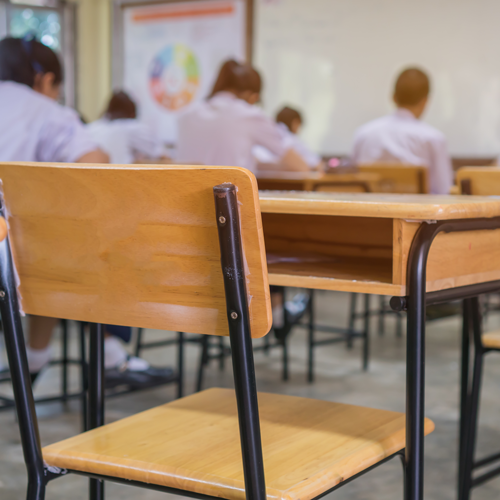Nearly 30 percent of K-12 students were chronically absent in the 2021–22 academic year, according to a review of federal data released Oct. 12 by Attendance Works and the Everyone Graduates Center at Johns Hopkins University.
U.S. Department of Education data showed 66 percent of students attended a school with high or extreme levels of chronic absence. Put another way, at least one in five students in their school was missing almost four weeks of classroom time throughout the school year.
This drastic increase from before the COVID-19 pandemic, when 25 percent of all enrolled students attended schools with high or extreme chronic absence, makes teaching and learning more challenging when large numbers of students are frequently missing class.
Additionally, such a rapid increase in the level of chronic absence easily overwhelms a school’s capacity to respond, according to Attendance Works Executive Director, Hedy Chang, and Robert Balfanz and Vaughan Byrnes of the Everyone Graduates Center.
The rates at which chronic absenteeism increased in 2021–22 meant that an elementary school with typical enrollment and a chronic absenteeism rate equal to the national average for elementary schools had about 100 chronically absent students, a similar middle school about 150, and a similar high school about 200. Such high numbers of chronically absent students are beyond the capacity of a single social worker or counselor to address.
“Unaccustomed to such significant numbers, many schools may not have had in place an effective tiered approach to improving attendance,” Chang, Balfanz and Byrnes wrote. “As a result, not only were more students chronically absent, but fewer chronically absent students may have received the support and responses that would reduce chronic absence, especially given that COVID-19 was causing illness among teachers and the pandemic deepened already existing teacher shortages.”
The reasons students missed class time during the 2021–22 school year were plentiful and largely out of the control of school officials. Common reasons for being absent included being quarantined after testing positive for COVID, unstable transportation, struggles with untreated health needs as well as trauma and mental health issues, increased family and work responsibilities — particularly among high school students, and more. Additionally, staffing shortages made building relationships with students and families and ensuring engaging curriculum especially difficult, and myths about the unimportance of missing school may have been heightened by parents’ and students’ experiences with virtual schooling during the pandemic, according to the brief.
Addressing the above will not be quick and easy, and will require significant collaboration and effort among national, state, district, school and community leaders. Experts suggest, among other things, that:
- Investments be made in improving the underlying positive conditions for learning in schools that motivate showing up while also removing barriers to attendance by creating physically and emotionally healthy and safe learning environments and cultivating a sense of belonging, connection and support for every student and family.
- Systemic approaches recognize the strengths families, students and communities bring to the table, as well as their day-to-day realities to avoid counterproductive punitive approaches that alienate students and families.
- Schools offer relevant and engaging learning experiences as well as provide flexible and meaningful opportunities for students who missed out on extended periods of school to learn, gain credits and graduate.
- Staffing investments be made to address staffing shortages and boost staff health and well-being.
- Local leaders leverage community partners as well as youth themselves to ensure the bandwidth exists to support our students and families despite challenging conditions.
“Overcoming this attendance crisis is not a short-term endeavor,” authors notes. “Rather, ensuring all students have an equal opportunity to learn in the aftermath of the pandemic will require strategic and long-term investments aimed at reconnecting and re-engaging students and families in school. Reconnecting with both students and families is critical for putting in place meaningful solutions to support academic success and re-establishing a norm of attendance every day across the nation.”
Education leaders can build upon what has been learned about effective responses to chronic absenteeism over the past decade by reviewing the Attendance Playbook and Learnings from the Grad Partnership with interventions that work, concluded Chang, Balfanz and Byrnes.





